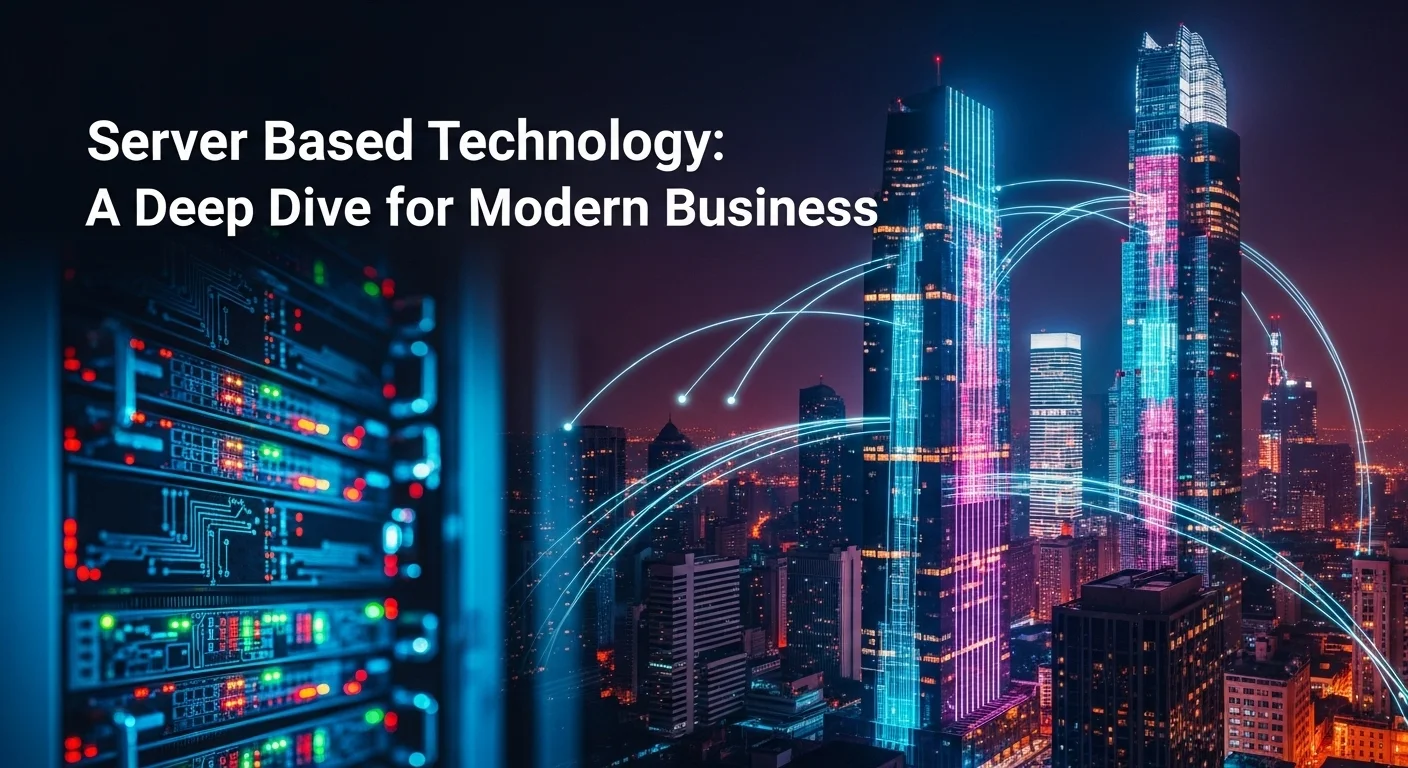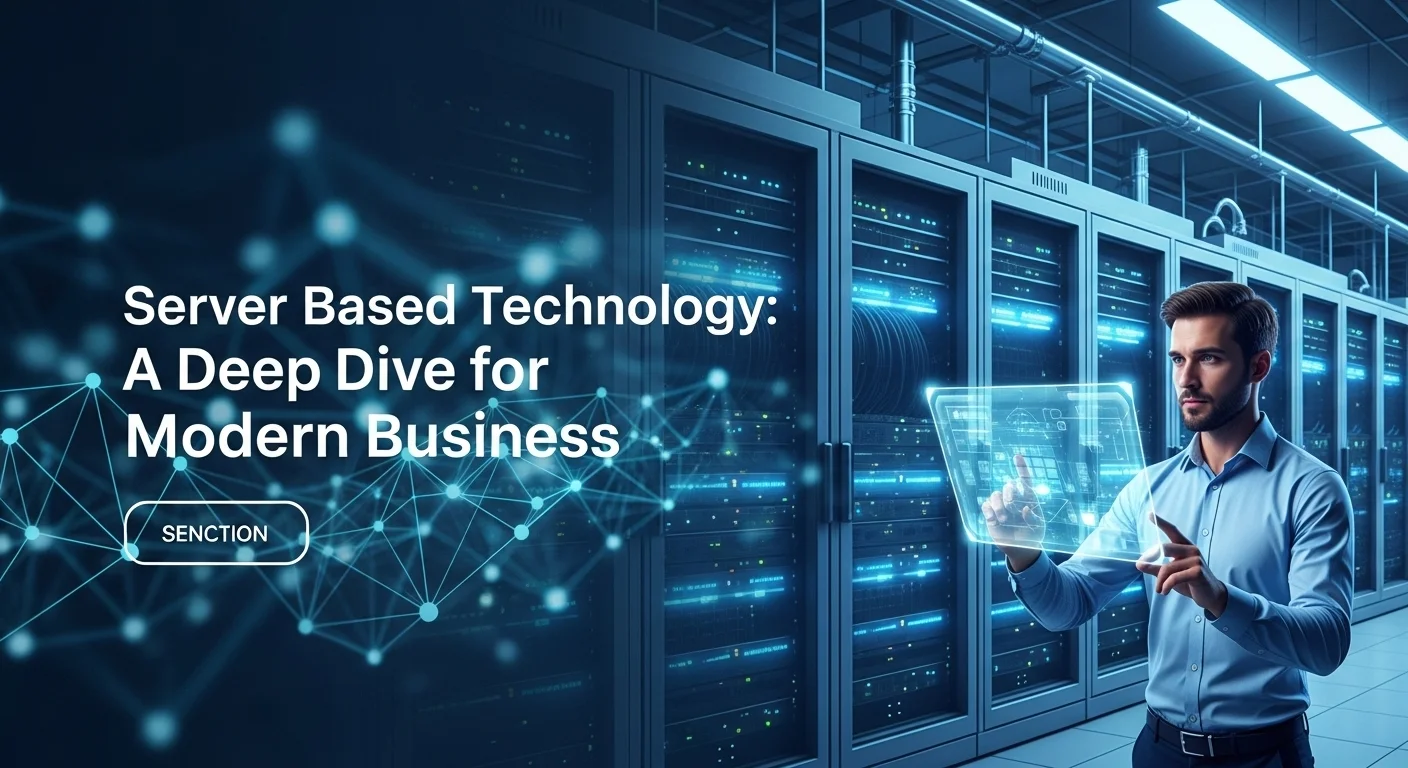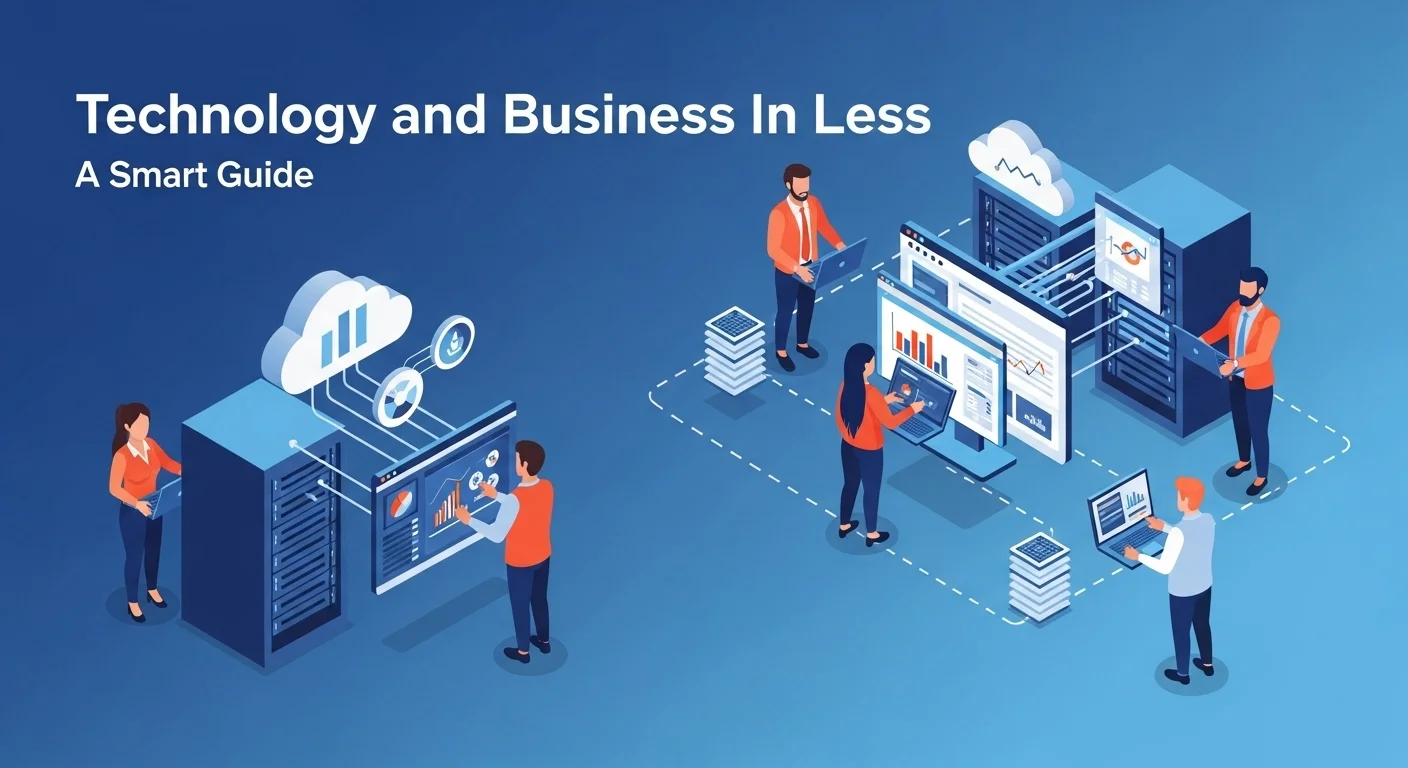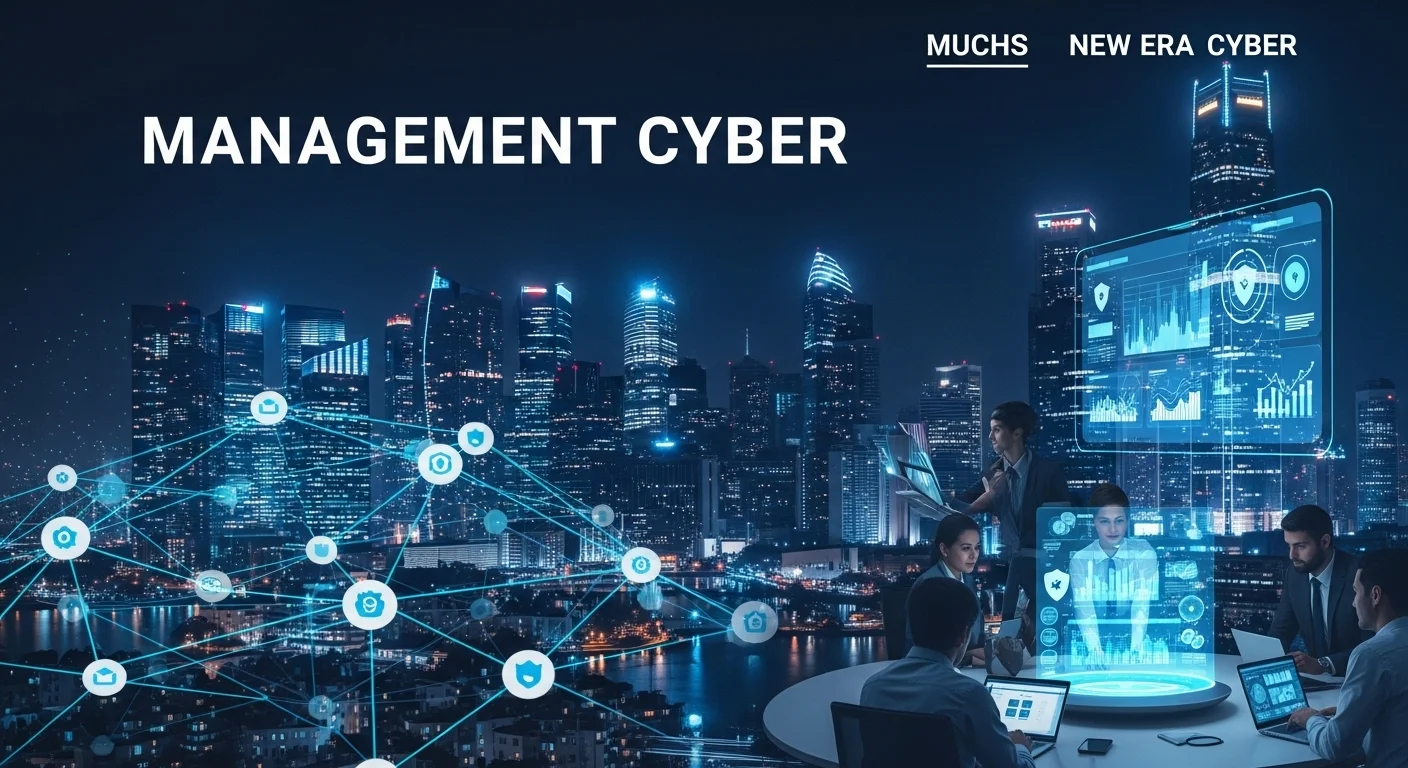Server-Based Technology: A Practical Guide for Your Business and Home

Executive Summary
At its heart, server-based technology is the backbone of our digital world. Think of it as a central library where all the important books (your data, apps, and processing power) are stored, managed, and kept safe, instead of having copies scattered in everyone's homes. I've spent years in IT, and I've seen businesses transform by getting this one thing right. Whether you're thinking about building your own physical server room for ultimate control, or you're drawn to the flexibility of a cloud server to grow your business, understanding this concept is your first step. This guide is my way of breaking it all down for you. We'll look at the real costs of a cloud server, why having a solid backup plan is non-negotiable, and even how you can build a personal cloud server at home. This is for the business leaders, the IT pros, and the curious tech lovers out there.
Table of Contents
What is Server-Based Technology and Why Does It Matter?
In my line of work, I see the term 'server-based' thrown around a lot, but what does it actually mean for you? Simply put, it's the engine behind almost everything you do online. From sending a simple email to running a global company, server-based technology is working quietly in the background. The core idea is simple: instead of having all the processing power and data on your personal laptop or phone, it’s all handled on powerful, centralized computers called servers. You, the 'client,' just connect to this central hub over a network to get what you need. The importance of this is huge—it’s what makes the internet, corporate IT, and the entire cloud computing revolution possible.
The Journey from Mainframes to the Cloud
I find the history of this fascinating because it shows how far we've come. It started with giant mainframe computers that took up entire rooms. Companies used them for centralized computing, with users connecting through 'dumb terminals'—basically just a screen and a keyboard. Then, as personal computers became common, the client-server model took over, which is the foundation of the internet we use today. Your PC (the client) requests web pages or data from a company's server.
The biggest leap forward, in my opinion, has been the move to the cloud. A cloud based server isn't some magical thing in the sky; it's just someone else's powerful computer that you rent space on. This changed everything. Suddenly, small businesses could afford the same computing power as massive corporations without buying any expensive hardware. This shift has fueled so much innovation. Need a cloud based web server for your new website? You can have one running in minutes. This new reliance on the cloud also brought a critical issue to the forefront: data protection. A solid cloud based server backup isn't just a good idea; it's an absolute necessity for any serious business.
Why It's Fundamental for Modern Tech
So, why did this centralized model win out? It comes down to a few key benefits that are just indispensable today:
- Centralized Management: Imagine trying to update an application on a thousand different computers. It’s a nightmare. By putting the application on a central server, an IT admin can update it once, and everyone gets the new version instantly. This saves an incredible amount of time and prevents so many headaches.
- Enhanced Security: Which is safer: having your company’s secret formula on 100 different laptops that can be lost or stolen, or on a single, heavily protected server in a secure data center? It’s a no-brainer. Servers are physically and digitally locked down in ways a personal device never could be.
- Scalability and Flexibility: A cloud based server is incredibly elastic. If your website suddenly goes viral, you can add more computing power with a few clicks to handle the traffic. When things quiet down, you can scale back down. This ability to adapt on the fly is a superpower for modern businesses.
- Resource and Cost Efficiency: Centralizing resources is just smarter. Instead of every employee needing a top-of-the-line computer, you can let the server do the heavy lifting. With the cloud, the cloud based server cost is often a 'pay for what you use' model, which means you're not wasting money on hardware you're not using.
- Accessibility and Collaboration: This is what powers remote work. Because all the files and applications are on a central server, your team can access them from anywhere in the world. People can collaborate on the same document in real-time, which boosts productivity like nothing else.
Real-World Business Applications
In business, server-based technology is everywhere. Big systems like ERP and CRM software that manage a company's finances and customers are classic examples. Your company website is almost certainly hosted on a cloud based web server built to serve pages to visitors 24/7.
For small and medium businesses, the affordable cloud based server has been a revolution. It gives them access to tools and infrastructure that were once out of reach, leveling the playing field. A small startup can run its entire operation—website, e-commerce, internal files—on the cloud. This drastically cuts down on the complexity and cloud based server cost of managing their own IT. And I always stress this to them: a reliable cloud based server backup strategy is their insurance policy. It ensures they can get back online quickly after a disaster, be it a cyberattack or a simple hardware failure.
This idea has even trickled down to our homes. The home based cloud server, often a small, quiet box called a NAS (Network Attached Storage), lets you create your own private cloud. I have one myself, and it's fantastic. I use it to store all our family photos and videos, stream movies to any device in the house, and automatically back up our laptops. It gives me total control and privacy over my family's digital life, mirroring the same benefits I see in my enterprise clients' worlds.
At the end of the day, server-based technology is about centralizing for efficiency, security, and power. Whether it's a massive data center, a flexible cloud provider, or a small home based cloud server, the principle is the same. Understanding it is key to making smart decisions in our digital age.

A Practical Guide to Server Solutions for Your Business
Choosing the right server setup can feel overwhelming, but it boils down to understanding your needs. As an architect, my job is to help people navigate these choices. This guide is my attempt to give you a clear map of the landscape, comparing the main approaches and the tech that makes them tick. Whether you're a startup or an established company, there’s a solution that fits.
On-Premise vs. Cloud vs. Hybrid: Making the Right Choice
The first big decision you'll make is where your servers will live. This single choice impacts everything from cost and security to how quickly you can adapt to change.
- On-Premise Servers: This is the old-school way. You buy the physical hardware, and it sits in your office or a dedicated server room. I've worked with companies that need this for one reason: total control. For certain industries with heavy regulations or for applications that need lightning-fast, internal response times, having the server on-site is non-negotiable. But this control is expensive. You have a huge upfront cost for the equipment and ongoing costs for power, cooling, and the IT staff to maintain it. Scaling up is also a slow, painful process of buying and installing more machines.
- Cloud-Based Servers: This is where a provider like Amazon Web Services (AWS), Microsoft Azure, or Google Cloud owns the hardware, and you rent capacity from them. For most businesses I work with today, this is the way to go. The benefits are huge: scalability and cost-effectiveness. The cloud based server cost is a predictable monthly expense instead of a massive upfront investment. If you need more power, you get it in minutes. The providers handle all the maintenance and offer world-class security. The main trade-off is giving up some direct control, as your data lives on their infrastructure, which can be a hurdle for some. A simple cloud based web server is often a business's first and most successful step into the cloud.
- Hybrid Cloud: This approach tries to give you the best of both worlds. It's a mix-and-match strategy where you use both on-premise servers and a public cloud based server. I often recommend this for established companies. They can keep their most sensitive data or core legacy systems in-house on their own servers while using the cloud's power for development, testing, or as a crucial part of their cloud based server backup and disaster recovery plan. It's incredibly flexible but does add a layer of complexity to manage both environments seamlessly.
The Tech Behind the Magic: Virtualization and Containerization
Modern servers, especially in the cloud, work so efficiently because of two brilliant technologies. Understanding them helps you see what's happening under the hood.
- Virtualization: This is the workhorse of the cloud. Think of a big physical server as an apartment building. Virtualization software, called a hypervisor, acts as the building manager, dividing the building into multiple, completely separate apartments (Virtual Machines or VMs). Each VM has its own 'front door,' kitchen, and bathroom (its own operating system, CPU, and memory). This is how a cloud provider can safely and securely rent out pieces of a single physical server to many different customers.
- Containerization: This is a newer, more lightweight approach. To use the same analogy, if virtualization creates separate apartments, containerization creates perfectly organized, self-contained rooms within one large apartment. Each 'container' packages an application and everything it needs to run. They all share the building's main plumbing and electricity (the host operating system), which makes them much smaller and faster to set up than VMs. Technologies like Docker and Kubernetes have made containers the go-to choice for modern applications, especially for a dynamic cloud based web server that needs to scale and update quickly.
The Rise of the Personal Home Cloud Server
For tech lovers or anyone wanting ultimate control over their digital life, a home based cloud server is a fantastic project. I built one for my family, and it's changed how we manage our data. These are usually small, dedicated devices (like a Synology or QNAP NAS) or even a custom-built PC. The benefits are clear: you pay for the hardware once (no monthly fees), your data is completely private, and you can customize it however you want. My home based cloud server is our central media hub for movies, a private photo gallery that syncs from our phones, and a backup location for all our computers. It took a weekend to set up, but the peace of mind and control it offers is priceless.

Pro Tips for a Better Server Experience
Getting the most out of your server environment, whether it's a massive cloud deployment or a small box in your home office, comes down to smart habits and best practices. Over the years, I've learned a few things—often the hard way—that can make a huge difference. Here are my top strategies for improving security, performance, and cost-efficiency.
Essential Server Security Practices
Server security isn't a 'set it and forget it' task. It's a constant process. A single breach can be devastating, so I take these practices very seriously.
- My First Rule: Lock All Unnecessary Doors: This is what we call 'hardening.' Go through your server and shut down any software, services, or open network ports that aren't absolutely essential. Every open door is a potential way in for an attacker.
- Implement Strong Access Control: Operate on the 'principle of least privilege.' This means users should only have access to the bare minimum they need to do their job. Always use strong, unique passwords, but more importantly, enable Multi-Factor Authentication (MFA) everywhere you can. It's one of the most effective security layers you can add.
- Keep Everything Updated, Always: This is so simple, yet so many people neglect it. Hackers love to exploit known security holes in outdated software. Set your operating system, web server, and applications to update automatically whenever possible. It's your digital immune system.
- Use Firewalls as Your Bouncer: A firewall should be configured to block everything by default, and you should only poke holes in it for the traffic you absolutely need—like port 443 for a secure cloud based web server.
- Backups Are Your Ultimate Safety Net: A solid cloud based server backup is your get-out-of-jail-free card. In a ransomware attack, a clean backup might be the only thing that saves you. I live by the 3-2-1 rule: keep 3 copies of your data, on 2 different types of media, with at least 1 copy stored off-site (or in a different cloud region). Also, monitor your server logs constantly for anything strange.
Optimizing Performance While Managing Costs
A great server setup is fast, reliable, and doesn't cost a fortune. This is a balancing act, especially with the variable cloud based server cost.
- Stop Over-Provisioning: This is the most common way people waste money in the cloud. They buy a server that's way more powerful than they need. Look at your usage reports. If your server is only using 10% of its CPU, you're paying for 90% you don't need. 'Right-size' your instances to match your actual workload.
- Leverage Caching: For any busy cloud based web server, caching is your best friend. A Content Delivery Network (CDN) will store copies of your images and files in locations all over the world, so they load faster for your users and reduce the strain on your server.
- Choose the Right Tool for the Job (Storage): Don't use expensive, high-speed storage for everything. Use fast SSDs for your operating system and databases that need quick access. For long-term backups or archives, use slower, much cheaper storage options.
- Automate Your Savings: This is a simple trick that adds up. Write a script or use a cloud tool to automatically shut down your development and test servers on nights and weekends. Why pay for them when no one is using them?
Migrating and Setting Up Your Own Home Cloud Server
Ready to take control of your data? Setting up a home based cloud server is a really rewarding project. Here’s a quick guide to get you started:
- Choose Your Hardware: You don't need much to start. An old PC you have lying around or a Raspberry Pi can work. For a more polished experience, a dedicated NAS from a brand like Synology is a great choice. The key things to consider are low power consumption (it will be on 24/7) and enough space for your data.
- Select Your Software: Open-source software like Nextcloud can give you your own private Google Drive-like experience. For media, Plex is fantastic. Many of these can be installed easily using Docker, which I highly recommend as it keeps things tidy and simple to manage.
- Lock It Down: Once it's running, secure it. Change all default passwords, set up user accounts for your family, and configure your router to allow secure access from the outside world. Using a VPN to connect to your home network is the most secure method.
- Don't Forget Backups: Yes, even your home based cloud server needs a backup! Hardware fails. A simple strategy is to plug in an external USB drive and have it run a backup once a week. You could even back up your most critical files to a cheap cloud storage service for extra peace of mind.
By following these strategies, you can build a server environment that is powerful, efficient, and secure. It’s the foundation of any great digital operation. For those looking to dive deeper, a great external resource is the What is Cloud Computing? page by Amazon Web Services, which provides foundational knowledge on the leading cloud platform. It gives me total control and privacy over my family's digital life, mirroring the same benefits I see in my enterprise clients' worlds.
Expert Reviews & Testimonials
Sarah Johnson, Business Owner ⭐⭐⭐
This was a good overview, but as a small business owner, I was hoping for more step-by-step examples of how to apply this. A bit more on the practical 'how-to' would make it perfect.
Mike Chen, IT Consultant ⭐⭐⭐⭐
Solid article on server-based tech. As an IT consultant, I found it accurate and helpful for framing conversations with clients. Could be slightly simpler in a few spots, but overall, a great resource.
Emma Davis, Tech Expert ⭐⭐⭐⭐⭐
Fantastic and thorough! This piece on server-based technology is incredibly well-written. It clarified so many concepts for my specialization. Easily one of the best explanations I've read.



